Learning the Japanese Way of Caring Through Honorific Language and Greetings

Parkland College, USA, participated in a school exchange with Oshukan Secondary Education School in Tokyo. Thomas (24), a student of the college, and Professor Ruijie Zhao share their experiences. Thomas talks about his presentation on daily life and culture in the US and his impressions of the performances organized by the Japanese school. Professor Zhao delves into the planning and preparations for the trip and shares advice for those considering educational travel and school exchange programs in Japan.
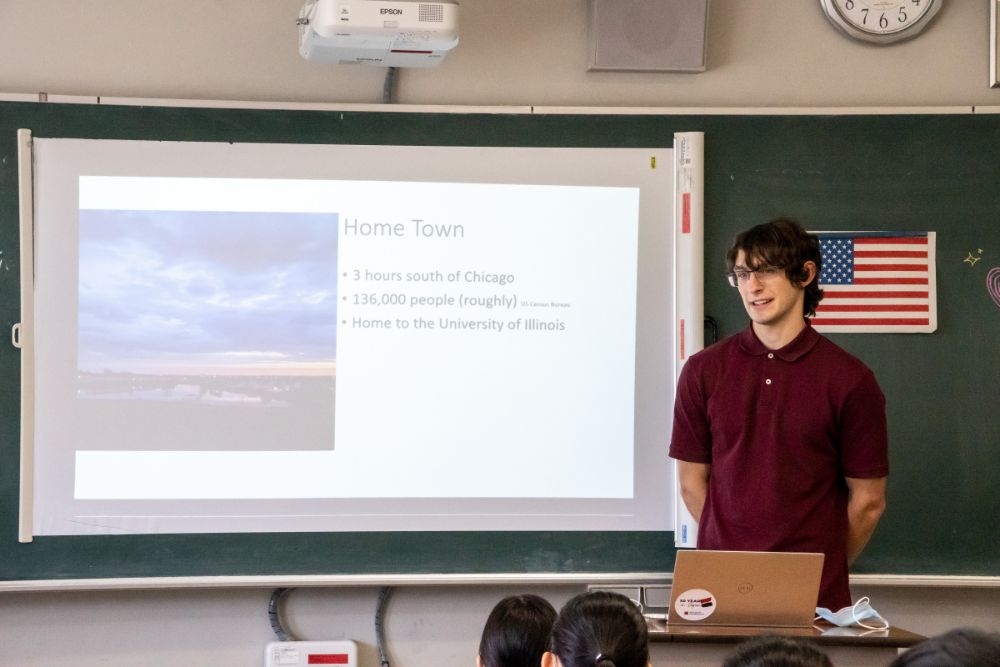
I am currently a nursing major at Parkland College. I was always interested in Japan thanks to my Japanese friends and Studio Ghibli. I was taking Professor Zhao’s class on Eastern culture, and when I heard there would be an educational trip to Japan in the spring semester, I decided to participate. This is my first visit to Japan.
In our school exchange with Oshukan Secondary Education School, we had the opportunity to share about our lives in America with an assigned classroom as part of the exchange program. I prepared photos and PowerPoint slides about the town of Champaign, Illinois—where Parkland College is located—as well as the surrounding corn fields and the lives of the students. The Japanese high school students asked plenty of questions about the town. We also had a lot of fun talking about Nintendo games. It made me realize how universally popular Japanese games were.
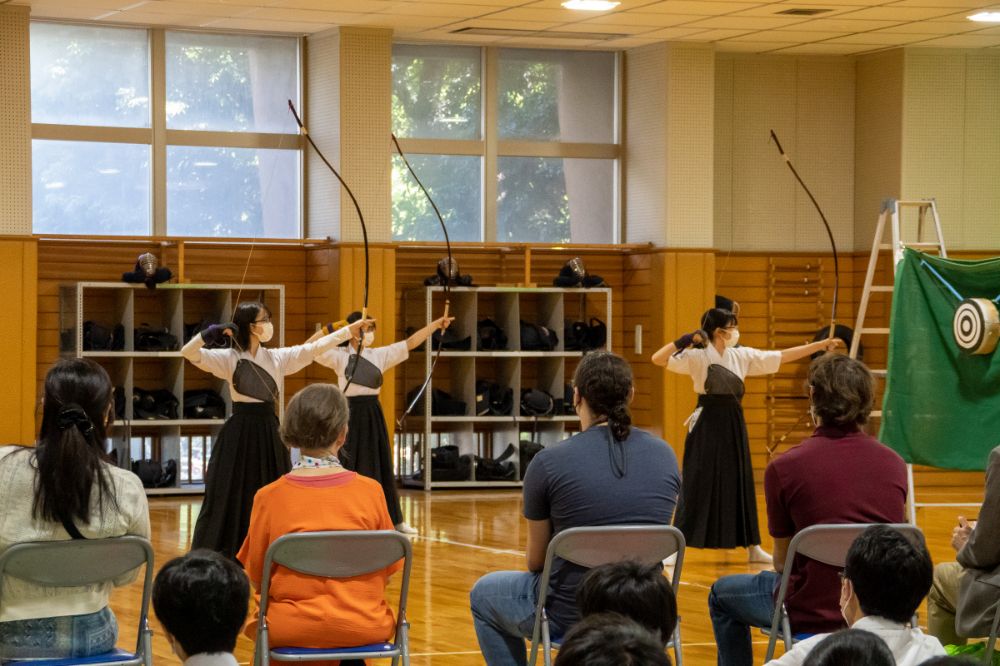
We were also given the chance to observe performances from various clubs at Oshukan Secondary Education School. I was particularly impressed with kyudo—a traditional Japanese martial art. I’ve tried archery before, so I noticed how the two are similar in some ways, but very different in others. Another amazing thing was how fast the students’ hands moved when they were playing karuta, a traditional card game.
I read a lot of books about Japan ahead of the educational travel, but nothing beats the real thing. The school visit gave me a deeper understanding of Japanese school life and various aspects of the culture. For example, the American media reports how Japanese high school students are fatigued since they study late into the night, but in reality, the students I met here were bubbly and energetic. Their extracurricular activities are fascinating and left a mark on me.
Overall, there were more similarities between Japanese and American high school life than I had expected. One key difference is that in Japan, students clean their classrooms. The custom is held dear, and I think it nurtures an attitude of self-discipline and a sense of responsibility toward your own actions.

I realized that ordinary daily life can look very different across countries—the lifestyle we have in America is not the same as elsewhere. That was one big takeaway for me. For example, I think Japan is much safer than the US. However, the same system may not work everywhere since there are differences. And it’s not just Japan and the US —each region has its own norm. This trip has truly broadened my horizons and expanded my worldview.
Besides the school exchanges, the most memorable places for me were the shrines and temples. They had such a calm and relaxing atmosphere. I am not a religious person by any means, but this trip deepened my interest in Shintoism and Buddhism. Tokeiji Temple or “Divorce Temple” in Kamakura was particularly fascinating. This educational travel to Japan has inspired me to visit other Asian countries as well. I’d like to expand my horizons even further by actually experiencing different cultures.

Professor Ruijie Zhao specializes in English and teaches classes on East Asian cultures. She has been teaching for 24 years.
Parkland College had conducted an educational travel program to Japan in 2019, with JNTO arranging a school exchange for us in Tokyo. It was such an enjoyable and rewarding experience as it gave our students the opportunity to interact face-to-face with the Japanese students. We were eager to do it again. I personally had an interest in Japan, and so did many students thanks to anime. That’s why we chose Japan as our destination. The Japan House (in the University of Illinois campus), which showcases elements of Japanese culture such as tea ceremony, is another reason why so many of our students are intrigued by Japan.
We had hoped to conduct educational travel programs to Japan on a biennial basis, but were unable to do so because of the COVID-19 pandemic. It was only last fall that we decided to restart the program. We made an inquiry to JNTO in December 2022 and formally submitted our application the following month. We were then notified of the exchange partner school in April. Initially, we were worried about whether JNTO is still involved in matching schools, but they were extremely accommodating. It is very reassuring to know that there is a contact point for overseas schools like ours.
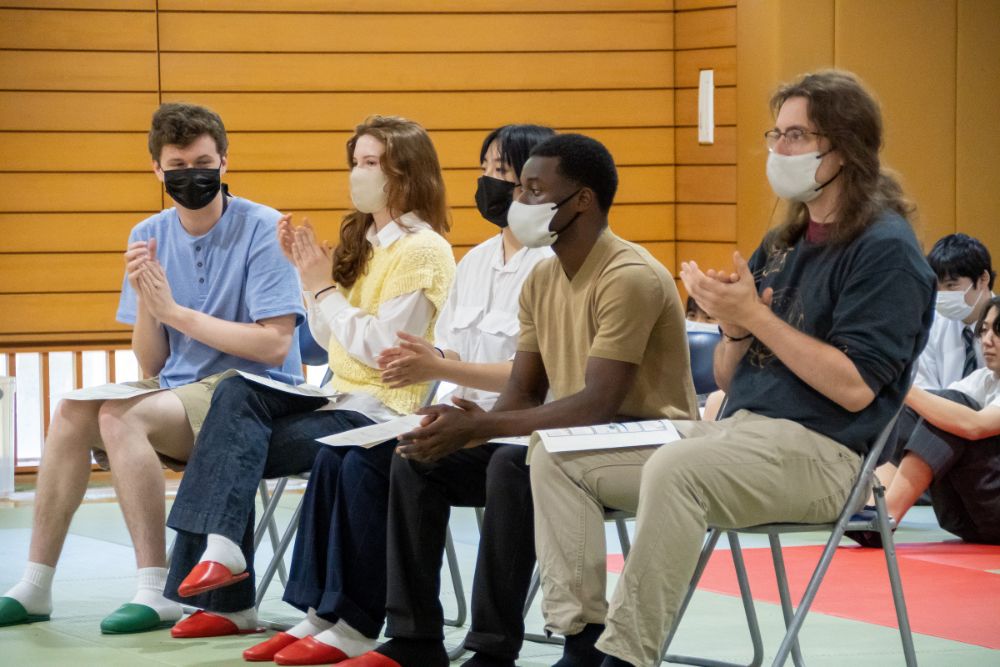
Parkland College is a two-year college that offers educational travel to various regions, including Europe and South America. This study abroad program was open to anyone enrolled as a student at the college. The students who ended up being accepted into the program were members of the college’s Japanese Culture Club and students enrolled in my East Asian Culture class. The group was led by the director of the Japanese Culture Club, Professor Travis Sola, who specializes in psychology and is well versed in Japan, and myself. In total, there were ten of us, with eight participating students.
We first visited Tokyo, the capital. We were eager to see life in the big city, with skyscrapers and cutting-edge technology. It’s such a striking contrast to where we live, surrounded by cornfields. Kyoto and Nara were vital to learning history. At Hakone, we were able to see traditional tatami rooms and experience hot spring culture. Then in Hiroshima, we learned about the atomic bomb. Finally, we spent some time relaxing in Osaka. We walked an average of 18,000 steps a day, and the students wrote in their journals every night, which was their assignment for the trip.
The participating students were enrolled in a spring semester humanities course that covers Japanese culture, religion, philosophy, politics, economics, and cross-cultural communication. The educational travel program to Japan is positioned as fieldwork conducted as part of this class. In the first half of the course, students acquire facts and theories. Then after they return from their visit to Japan, they are asked to submit a report on a theme of their choosing. Since this is not just a sightseeing trip, the opportunity to actually interact with Japanese students was a crucial component.
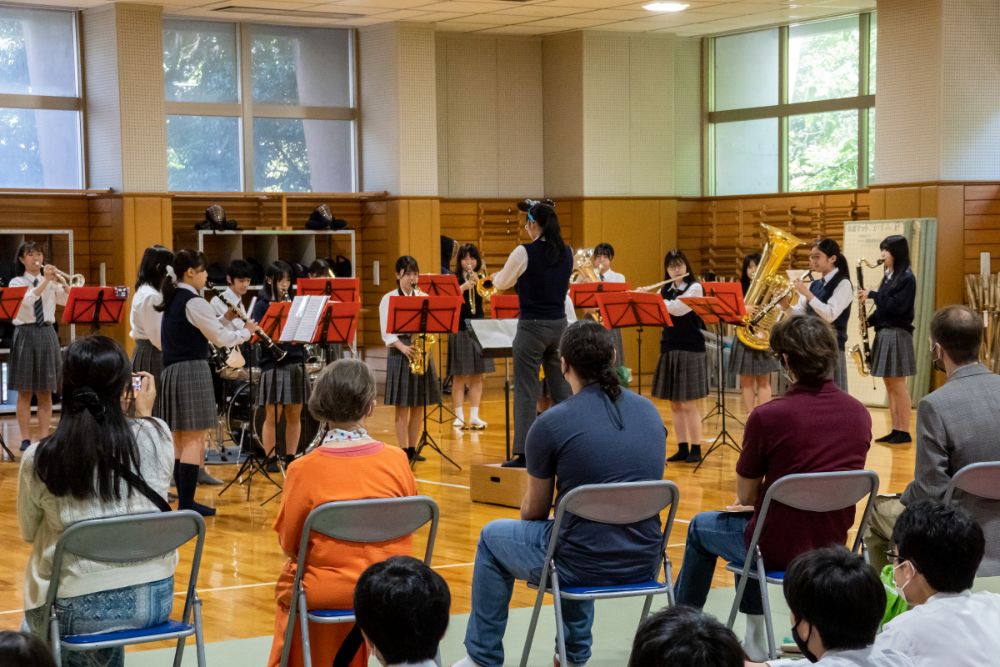
We did not make any particular requests regarding the programs. However, the students of Oshukan Secondary Education School put on kyudo, karuta, and brass band performances that left us incredibly impressed.
Oshukan Secondary Education School asked us to share with them about our lives in America, so the students gave PowerPoint presentations about their families, the city of Champaign, their hobbies and interests, their experiences and activities in high school and at Parkland College, and their work experiences. All communication was in English, but we didn’t face any issues. Although the school exchange was only half a day long, it was very open and lively.
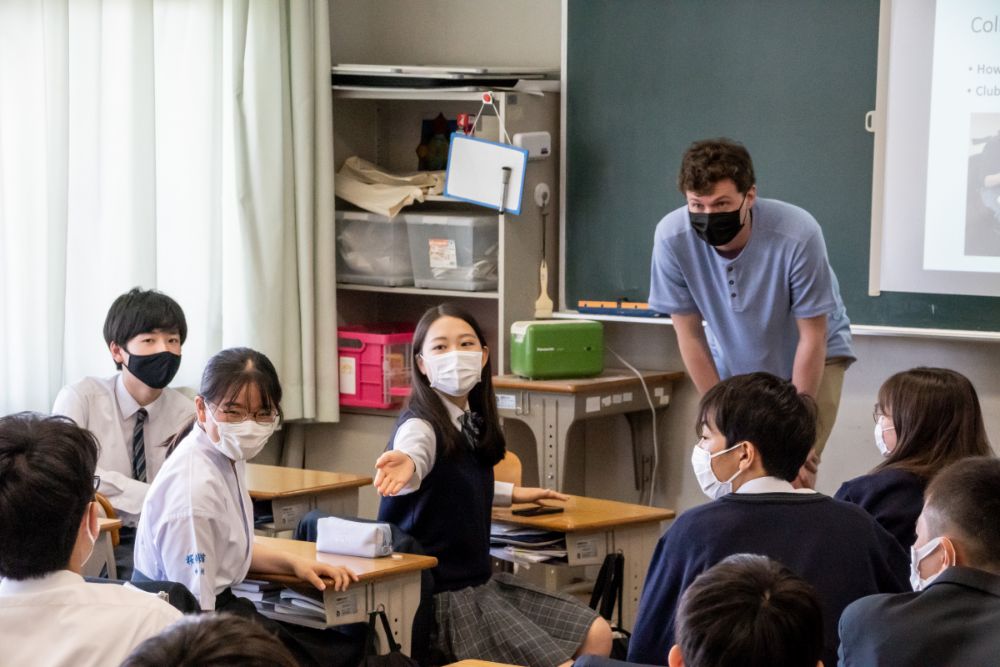
We hope to do it again in two years and further expand on it as well. I am personally interested in Japanese school lunches, so if possible, it would be great if we could include a school lunch program in the exchange next time. It is unthinkable in American public schools for students to have warm, nutritious meals at school.
The exchange program with Japanese students was an incredibly valuable experience, but it would have been difficult to realize without the support of JNTO. I recommend that you start planning early and contact JNTO as soon as your application documents are ready so that you are well prepared. For a well-balanced itinerary, I think it’s important to incorporate some time to relax in nature and not just focus on historical sites.
| Visiting School | Parkland College(United States) open_in_new |
|---|---|
| Host School | Tokyo Metropolitan Oshukan Secondary Education School(Tokyo) open_in_new |
| Date | 16th May in 2023 |
| Main Exchange Programs | Intercultural Exchange, International Exchange |
| Age of Participating Students |
Parkland College :
18 years old or older
Tokyo Metropolitan Oshukan Secondary Education School :
16 to 17 years old
|
| Number of Participants |
Parkland College :
10 people (
8 students, 2 teachers)
Tokyo Metropolitan Oshukan Secondary Education School :
145 people (
141 students,
4 teachers)
|
| Itinerary | 12th - 29th May in 2023 |
|---|---|
| Main Destinations | Tokyo, Kanagawa, Kyoto, Hirosima, Osaka |